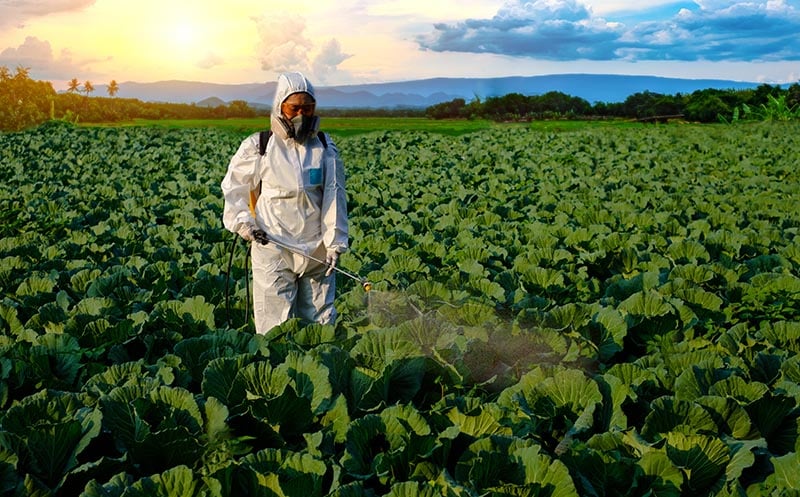What food is causing early puberty? There are many things in food that can trigger an early puberty. What may be surprising to some is that there are no specific foods that cause puberty to start early. Instead, it is the overabundance of a certain type of food, or foods that have been exposed to other triggers for early puberty.
1. Food and Drinks High in Fat
One gram of fat contains 9 calories, while all other macronutrients contain 6 calories, so the more fat in a child’s diet, the more easily the child can put on extra weight. This extra weight is typically in the form of body fat. Body fat produces a hormone called leptin, which plays a key role in the onset of puberty. Leptin acts on the hypothalamus to stimulate the production of gonadotropin-releasing hormone (GnRH), a key hormone in the initiation of puberty. Diets high in fat can lead to increased body fat and, in turn, higher leptin levels, potentially leading to earlier onset of puberty.
Diets high in certain fats, especially saturated fats, can lead to increased insulin resistance. Higher levels of insulin can stimulate the ovaries to produce more estrogen, a hormone involved in the onset of puberty in girls. This can potentially lead to an earlier onset of menstruation and other signs of puberty.
Some fatty foods, especially those from animal sources, may contain hormone-like substances or endocrine disruptors that can affect the body's hormone balance. These substances could potentially influence the timing of puberty. Persistent organic pollutants (POPs), such as polychlorinated biphenyls (PCBs) and certain pesticides, can accumulate in the environment. For example, dioxins are environmental pollutants that have the potential to disrupt the endocrine system. They are fat-soluble and can accumulate in the fat tissues of animals. Some animals, particularly livestock, may be exposed to hormones or hormone-like compounds to promote growth, or for other reasons. Sometimes, the feed given to livestock can be contaminated with substances that have endocrine-disrupting potential and can lead to the accumulation of these substances in the fat of the animals. Residues of these substances can remain in animal fat, and when consumed, could potentially disrupt human hormonal balance.
Diet influences the composition of the gut microbiome. The gut microbiome, in turn, can influence the metabolism of sex hormones. Changes in the gut microbiome caused by dietary fat might play a role in the onset of puberty. There are many theories on how this may happen that are being explored in more depth.
Gut bacteria can break down and influence the levels of sex hormones, such as estrogens. Estrogen is fat soluble, meaning that it stays in fat. Some gut bacteria (a part of the microbiome) produce an enzyme called beta-glucuronidase, which deconjugates (makes fat-soluble) estrogens that have been conjugated (made water-soluble) by the liver for excretion or removal from the body. When this happens, it can lead to the estrogen being absorbed back into the bloodstream, which could potentially influence the timing of puberty.
Some gut bacteria can produce or influence the production of neurotransmitters, such as serotonin and dopamine. These neurotransmitters play a role in the central nervous system and may have downstream effects on the hypothalamic-pituitary-gonadal axis, the primary system needed for puberty development.
2. Food and Drinks High in Sugar
It has been proven that an abundance of foods high in sugar lead to excess weight gain, and can trigger the development of puberty, as described above. Additionally, insulin resistance is triggered by a large intake of carbohydrates, with sugar being the biggest trigger for insulin production and release in the body. The more sugar one eats, the more insulin is required from the body to maintain normal blood sugars. When the body is consistently challenged with a large sugar load to digest, it starts to become resistant to insulin over time. This insulin resistance may trigger early puberty, as described above, as well.
Excessive sugar intake can contribute to low-grade chronic inflammation in the body. Chronic inflammation from the presence of excess sugar in the body can lead to insulin resistance, which, as we just discussed, may trigger early puberty.

Inflammation from excessive sugar intake might affect the function of the hypothalamic-pituitary-gonadal axis, which regulates puberty. Inflammatory mediators, such as cytokines, can influence the activity of this axis. For instance, certain cytokines can impact the production and release of gonadotropin-releasing hormone (GnRH), which is crucial for the onset of puberty. Chronic inflammation can be a source of physiological stress. In response, the adrenal glands may produce increased levels of adrenal androgens, which are precursors to sex hormones like testosterone and estrogen. Elevated levels of these androgens might contribute to earlier pubertal development.
Some studies have suggested that the ratio of sugar to protein in the diet might influence pubertal timing, particularly in girls. High sugar coupled with low protein intake might exacerbate the effects on puberty onset.
Some sugary foods and drinks, particularly those in plastic packaging, might contain endocrine-disrupting chemicals (like BPA). These chemicals can interfere with the body's hormonal balance and might influence the timing of puberty, although this is an indirect effect related to the packaging rather than the sugar itself.
3. Food and Drinks Packaged in Plastic

As mentioned in a previous post, there are a number of chemicals in plastics that appear to trigger early puberty, including bisphenol A (BPA) and a group of compounds known as phthalates.
In summary, BPA is a chemical compound commonly found in plastic products, such as water bottles, food storage containers, and the linings of metal food and beverage cans. BPA can leach out of these products, especially when they are heated or in contact with acidic or fatty foods. When ingested, BPA can act as an estrogen mimic. Since estrogen plays a pivotal role in the onset of puberty, exposure to BPA could potentially impact pubertal timing.
Phthalates are another group of chemicals used to make plastics more flexible and harder to break. They can be found in a variety of toys, detergents, lubricating oils, food packaging, and pharmaceuticals, and as well as personal care products, such as nail polish, hair sprays, and shampoos. Some phthalates can disrupt the endocrine system by reducing the levels of sex hormones, which are crucial for the development and function of the reproductive system.
These endocrine disrupting chemicals (EDCs) can bind to hormone receptors in the body, altering the normal function of hormones. They may stimulate the early production of sex hormones, triggering the onset of puberty sooner than expected. They could also interfere with other signaling pathways, affecting the delicate balance of hormones needed for normal development. Numerous studies have explored the link between EDCs in plastics and early puberty. While there is evidence suggesting a potential association between exposure to these chemicals and changes in pubertal timing, the exact relationship and mechanisms are still under investigation. Factors like the amount and duration of exposure, individual susceptibility or likelihood to respond to these exposures, and combined effects of multiple EDCs make this a complex area to study.
If you want to avoid plastic exposure, try to shop at farmers markets, or buy in bulk areas from the grocery store, rather than the pre-packaged items, when possible. Carrying food and drinks in glass, silicon, or stainless steel containers will decrease your exposure, and may limit some waste at the same time!
4. Foods Grown with Exposure to Chemicals and Pesticides
As mentioned earlier, some livestock may be exposed to hormone-like compounds for various reasons. Additionally, their feed can be contaminated with substances that have endocrine-disrupting potential. These substances can also accumulate in the fat of the animals that go on to be used as food for humans. Residues of these substances can remain in the animal fat, and when eaten, could potentially disrupt human hormonal balance.

A number of pesticides have been found to be associated with early puberty to a greater or lesser degree. These include DDT (dichlorodiphenyltrichloroethane) and its metabolite DDE (dichlorodiphenyldichloroethylene), and the classes of pesticides called organophosphates, pyrethroids and organochlorines.
Although DDT use was banned by many countries in the 1970’s due to environmental and health concerns, it is still used in other areas in the 21st century. There are a number of research reports in the last decade showing a multigenerational effect from just DDT. In one study, children - particularly boys - exposed to higher levels of DDT and other endocrine disrupting substances in utero were more likely to have early puberty. In another study, published in 2021, the effect of DDT was shown to be even longer lasting.It reported that exposure to DDT in grandmothers was associated with earlier menarche (onset of a menstrual period) in granddaughters.
While this can be disheartening, there are resources to help you make informed decisions about how to avoid some of the chemicals known to affect our food the most. For example, the Environmental Working Group’s website maintains an updated version of their Clean 15 and Dirty Dozen so you can find out which foods have the least and most exposure to pesticides.
5. Foods Cooked with certain Non-Stick Pans
Non-stick pans are typically coated with perfluoroalkyl substances (PFAS), especially one known as perfluorooctanoic acid (PFOA). PFAS are a group of man-made chemicals that have been used for decades in various applications, including in the production of non-stick cookware, but are also used in water-repellent clothing, and stain-resistant fabrics and carpets.
PFAS are known endocrine disruptors. The endocrine system regulates hormones in the body, which, in turn, control various functions including growth, metabolism, and reproduction. Disruption in the endocrine system can affect the timing and onset of puberty. More specifically, some studies have suggested that exposure to PFAS can result in earlier onset of menstruation (earlier age of a menstrual period) in girls. Early menstruation is a marker of early puberty. There have been research studies that have shown that in utero or early life exposure to PFAS can potentially affect developmental milestones, including the timing of puberty. This is concerning as developing fetuses and young children are especially vulnerable to environmental exposures.
One of the concerns with PFAS is that they are persistent in the environment and can accumulate in the human body over time. This means that even low-level exposures, if they occur consistently, can result in a significant buildup of these chemicals in the body. While non-stick pans are a source of PFAS exposure, it's important to note that they are not the only source. Contaminated water and food can also be significant sources of PFAS exposure, reaching back to the discussions earlier in this post. Some communities have found PFAS in their drinking water, often sourced from nearby manufacturing plants, landfills, wastewater treatment plants, firefighter training facilities, and other areas where PFAS might have been used or disposed of.
If you're concerned about exposure, check if your drinking water might be contaminated. Some water filters are certified to reduce certain PFAS. Be mindful of packaged food, as some food packaging materials might contain PFAS, and limit the use of PFAS-containing products.
If you decide to move away from non-stick cookware, there are many alternatives available, like stainless steel, cast iron, ceramic, and glass. Each type of cookware has its advantages and disadvantages in terms of cooking and maintenance. If you continue using non-stick pans, avoid overheating them. High temperatures can cause the non-stick coating to deteriorate faster and potentially release fumes. Always cook on low to medium heat and avoid putting non-stick pans in an oven that's set to a high temperature.
While there are no specific foods that should be avoided, this list gives you some great tools to think about where your food has come from, how it is treated, packaged, and served, to keep your whole family safer while trying to avoid early puberty for your child!
Share this
You May Also Like
These Related Stories

Foods that Cause Early Puberty

Top 6 Healthy Restaurants in Atlanta for Kids and Pre-Teens


